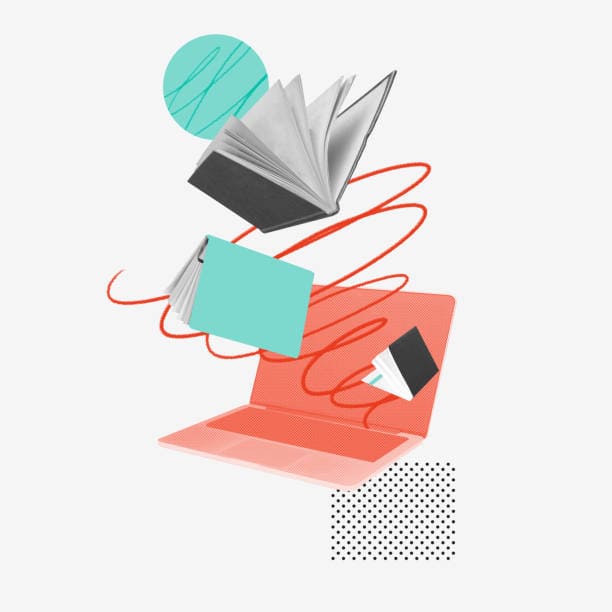AI Isn’t Going Anywhere. Ideas for How Educators Can Make It Work for Them
I’ll start off today sharing the guidelines I provide to my students about using ChatGPT to write essays (and you can also find the instructions a science teacher gives her students at the same link).
Here are reflections from two other educators:
‘Saving Time’
Michael Gaskell is a veteran principal in New Jersey, the author of over four dozen articles on best practices and solutions to persistent problems, and has a monthly Smartbrief column:
As a principal, I am always looking for ways to improve teaching practices and enhance learning experiences for students. I have become amazed by the potential of ChatGPT, Bard, and other AI tools in the classroom and am excited to share some of the ways teachers have successfully integrated these tools into their teaching practices at my school.
1. They save time (through command prompts or smart searches).
2. They enhance targeted uses such as research, project, and presentation.
The main disclaimer about these kinds of tools is that they get you 80 percent to 90 percent there. You tweak the rest. While this nets huge time savings, teach your students not to depend exclusively on them. We still need our brains to navigate the output and decipher what is best.
Command Prompting: Optimize ChatGPT and Bard by using thoughtful command prompts, or “smart searches.” Here are a few examples of prompts that improve teacher efficiency. Try a few!
timesaving
ChatGPT and Bard also provide research, presentation, and project-development tools. Here are some of my favorite Artificial Intelligence tools for teachers, currently free and user-friendly in the classroom:
Research, Presentation, and Project AI Tools:
You.com/imagine there are plenty of image-generative AIs: I like this one because it’s free and includes an AI chatbot comparable to ChatGPT. Students can create images for their work that do not violate copyright and have some fun making original illustrations.
Andi has a very student-friendly interface. It is an AI that generates factually correct answers to questions. Andi explains and summarizes information from reliable sources.
Talk to Books: Search Google’s massive inventory of books in its database. I searched my book with a specific topic (institutionalizing equity), and the text came right up! This offers research implications for students.
Consensus helps you find answers to research questions. Google single-sign on. Results are reliable since only research content is provided. The references are linked for follow-up. This is another great research tool.
Elicit is like consensus in its refined research content. Also a simple Google single sign on.
D-ID allows users to talk face to face with an AI. Great for ELLs picking up visual cues and is a pleasant way to interact with a soothing, clear, and concise AI.
Slides io converts text into Google slides. You get three presentations a month free (Google single sign on). Students should edit and revise the generative slides, since this is not perfect, and with all generative AI, they should be edited.
Eightify summarizes YouTube videos. This helps students find video clips for a presentation or project.
Tldrthis summarizes long text. Great for capturing the main idea in brief for further use. Simple Google single sign-on.
‘A Powerful Tool’
Taylor Jacobson, M.Ed, is an elementary teacher in Virginia. Find her on Twitter at @mstjacobson:
One day, my principal returned from a technology conference and started telling us about ChatGPT. As my co-workers and I racked our brains thinking about all the possibilities of this tool, I started to realize that artificial intelligence was COMING. If we don’t do something about it soon, students will figure out how to use it before we do, which could lead to some issues. But if we, as teachers, figure out how to use AI responsibly and helpfully, we will help these students today, and in their future lives.
The easiest application of AI in education is through chatbots like ChatGPT. I could create a virtual assistant that my students could interact with to get answers to their questions or find additional resources. This could be particularly helpful for students who may feel uncomfortable asking questions in front of their classmates. Chatbots are one of the most accessible forms of AI available to teachers right now. Students can use Chatbots to help them research and find answers to questions, and they can help them get more of an explanation of a concept that they are struggling with.
While there are concerns about the potential downsides of AI in education, such as the potential for students to rely too heavily on technology instead of building human connections, I believe that when used thoughtfully and responsibly, AI can be a powerful tool for enhancing the learning experience for my students.
AI prepares students for the future workforce. As AI becomes increasingly prevalent in various industries, many of my students will likely be using AI in their future jobs. By introducing them to AI in the classroom and teaching them how to use it responsibly, I can help set them up for success in the workforce. By striking a balance between the benefits and potential drawbacks of AI, I believe we can help our students develop the skills and knowledge they need to succeed in a rapidly changing world.
Beyond the incredible uses in your classroom, I have been using ChatGPT for some of the simple tasks of teaching already. I write most of my report card comments by adding information into ChatGPT to come up with a holistic comment that says everything that I’m trying to say (sometimes in a nicer way than I am putting into the bot).
I’m excited to explore the possibilities of AI in education. While it’s important to use AI responsibly and keep the focus on building human connections, I believe that AI has the potential to be a powerful tool for improving student outcomes. One day, all of these students will be using it. We have the opportunity to teach them how to use it responsibly, and if we don’t take that opportunity, we are doing a disservice to their future selves.
In addition to the above reflections, I’ve collected other advice at The “Best” Ideas for Using ChatGPT, Bard, and Other Forms of AI With Students.
I’ve shared my general reflections about how I believe artificial intelligence won’t necessarily make teaching and learning significantly better. Instead, I believe teaching and learning will primarily be different. And, it will be worse if teachers don’t adapt to it. You can read more at A Really Bad Thing About AI Is That It Forces Us Teachers to Spend a Ton of Time Rethinking Our Lessons. I Guess That Might Be a Good Thing About It, Too.
Finally, I also recently posted The Best 34 Free AI Tools for Education In 2023 – So Far.
Thanks to Michael and Taylor for contributing their thoughts.
Consider contributing a question to be answered in a future post. You can send one to me at [email protected]. When you send it in, let me know if I can use your real name if it’s selected or if you’d prefer remaining anonymous and have a pseudonym in mind.
Education Week has published a collection of posts from this blog, along with new material, in an e-book form. It’s titled Classroom Management Q&As: Expert Strategies for Teaching.
Just a reminder; you can subscribe and receive updates from this blog via email (The RSS feed for this blog, and for all Ed Week articles, has been changed by the new redesign—new ones are not yet available). And if you missed any of the highlights from the first 11 years of this blog, you can see a categorized list below.




